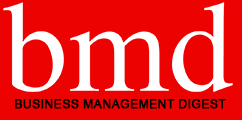Amy Webb is a quantitative futurist and a bestselling, award-winning author. She is a professor of strategic foresight at the NYU Stern School of Business and the founder of the Future Today Institute, a leading foresight and strategy firm that helps leaders and their organizations prepare for complex futures.
She was the winner of the 2017 Thinkers50 Future Thinker Award. A former visiting fellow at Harvard University, Amy is the author of The Big Nine: How the Tech Titans and Their Thinking Machines Could Warp Humanity and The Signals Are Talking: Why Today’s Fringe is Tomorrow’s Mainstream. She took time out from the future to contemplate the present and our leading questions.
What book are you currently reading?
Thinking In Bets by Annie Duke.
How do you describe what you do?
I’m a quantitative futurist. I work with the leaders of corporations and government agencies and prepare them for deep uncertainties and complex futures. Along with my team at the Future Today Institute, we identify weak signals and emerging trends, develop risk and opportunity models, and generate long-term strategic plans. A few years ago, I made my methodology, as well as all of my strategic foresight tools and frameworks open source and freely available to the public. We also make all of the Future Today Institute’s research available for free to anyone who needs it. I want to encourage leaders to foster a culture of foresight and futures work within their organizations.
What is your big idea?
Leaders must completely change how they think about time and uncertainty. Too often I hear the C-Suite argue that there is no use in planning past 5 or 6 years because there’s so much in flux. That’s a catastrophic mistake. Leaders must think short and long-term simultaneously. In 1-2 years, we have data, evidence and an understanding of the variables in play, so leaders can make tactical decisions about the future. The farther out you go, the less data and evidence there is to rely on, and the more variables there are to consider. Between 3-5 years, the foresight purpose is strategy; 5-10 years the goal is to focus on R&D and innovation; while systematic change is something to plan for at the 10+ mark. (See below.) Companies who’ve adopted this framework are seeing their performance benchmarks exceeded and are equipped to mitigate uncertainty.
Why does it matter now?
We are living in an era of tremendous uncertainty, and most organizations do not have a culture of strategic foresight built into their operational practices. Now more than ever, leaders must learn to think in multiple timeframes –– this will reduce the element of surprise, and it will set teams up for success in the midst of disruption.
Who or what is your biggest inspiration? John von Neumann, the father of game theory and a prolific future thinker. What he accomplished while he was alive is incomprehensible. I don’t think his mind ever powered down.
What does success look like?
This one is easy: strategic foresight is a core competency of every company and government agency worldwide. Like accounting.
What is your competitive advantage?
I have an unusual academic background: game theory, economics, political science, journalism and music. I’m a classically trained clarinetist, and I’ve been studying piano since age four. I’ve spent most of my life looking at data and listening for patterns: the connections between unlikely pairs, the significance of outliers, the meaning of the space between notes. As a futurist, I know better than to make predictions. I make connections.
How much time do you spend travelling?
Far more than I’d like.
What is the secret of a great presentation?
Deliberately connecting the content directly to each and every person in the room. I customize each presentation I give specifically for the audience I’m addressing, which requires a lot of research. I have exactly one goal when I speak: to move people into some kind of meaningful action.
What is your next goal?
Professionally: Launching a digital tool to help companies build their organizational capacity in strategic foresight. Personally: Survive the six-week U.S., Canada and European book tour for my new book The Big Nine that begins in March 2019.
What advice would you give to someone wanting to follow in your footsteps?
Read, read, read. Get your hands on a copy of The Futurists, a book edited by Alvin Toffler which contains themethodologies and writings of earlier futurists like Bertrand de Jouvenel and Olaf Helmer. Read Thinking About The Future by Andy Hines and Peter Bishop. You can also read my book, The Signals Are Talking, which explains the methodology I developed and use.
What is the biggest issue for business in the next decade?
Getting comfortable with uncertainty. We cannot predict exactly how the future will unfold. It’s mathematically impossible. However, we can and must build models to address our uncertain futures — so that we can make better decisions in the present.
Describe yourself in three words.
Methodical, tenacious, persistent. bmd
Courtesy: Thinkers 50

